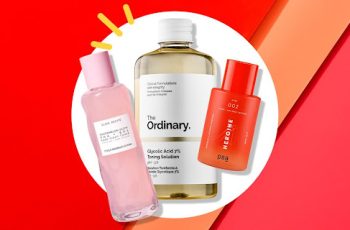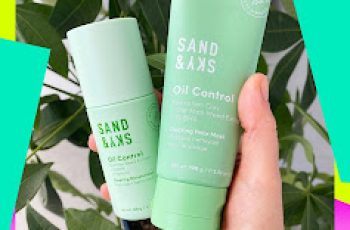The Science of Royal Jelly in Skin Care
Royal jelly (RJ) is often treated as, well, royalty in skin care, praised for its nourishing and rejuvenating properties. This unique substance, produced by bees, has been used for centuries in traditional medicine, and its potential benefits in modern skin care have been getting attention for decades.
Like all skin care ingredients, however, royal jelly might not be right for every skin type and concern. Here, we break down what this buzzy ingredient is, its active compounds, which skin types it’s best for, and how to incorporate it into your skin care regimen.
Royal jelly is a substance produced by bees with strong antimicrobial, anti-inflammatory, and anti-aging properties.
It can be applied as a rinse-off mask or leave-on serum or cream.
People with allergies to bees or pollen should not use royal jelly.
What Is Royal Jelly?
Royal jelly is a creamy, nutrient-rich secretion produced by worker bees to feed the queen bee and developing larvae in a hive. This substance is solely responsible for the queen bee’s growth, fertility, and longevity. The queen bee, who exclusively consumes royal jelly, can live up to five years, whereas worker bees live only a few weeks. This longevity and vitality have led to the use of RJ in various health and beauty products.
In skin care, RJ is used for its rich composition of vitamins, minerals, and bioactive compounds, which have been shown to nourish and hydrate the skin, providing strong anti-aging benefits (3).
Active Compounds in Royal Jelly
Royal jelly is a complex substance with a unique composition that contributes to its effectiveness in skin care. Some of its key active compounds include:
Proteins and peptides. Royal jelly is composed of about 12% to 15% proteins, including major royal jelly proteins (MRJPs) that have been shown to have anti-inflammatory and antioxidant properties (4). These proteins help in skin repair and rejuvenation, making royal jelly a popular ingredient in anti-aging products.
Lipids. The lipid content in RJ, which includes fatty acids like 10-hydroxy-2-decenoic acid (10-HDA), plays a significant role in its antimicrobial and anti-inflammatory effects. These fatty acids also help to maintain the skin’s natural barrier, keeping it hydrated and protected from environmental stressors.
Vitamins and minerals. RJ is rich in vitamins B1, B2, B6, and B12, as well as folic acid and pantothenic acid. These vitamins help improve skin texture, promote cell regeneration, and protect against oxidative stress.
Amino acids. Essential amino acids in RJ contribute to collagen synthesis, which is crucial for maintaining skin elasticity and firmness. This makes royal jelly an excellent ingredient for preventing and reducing the appearance of fine lines and wrinkles.
Antioxidants. RJ contains several powerful antioxidants, including flavonoids and polyphenols, which help combat free radicals and reduce oxidative stress on the skin.
Benefits of Royal Jelly in Skin Care
Royal jelly is often used in skin care for its anti-aging benefits, but it may also help the skin in these ways:
Anti-aging. Due to its high content of proteins, vitamins, and antioxidants, RJ helps to reduce the appearance of wrinkles and fine lines by promoting collagen production and cell rejuvenation.
Moisturization. Royal jelly’s lipid content makes it an effective moisturizer, helping to hydrate the skin and improve its elasticity. It is particularly beneficial for dry and mature skin.
Healing and soothing. The anti-inflammatory and antimicrobial properties of RJ help to soothe irritated skin and promote healing, making it useful for conditions like eczema, dermatitis, and minor wounds.
Estrogenic effects. Some studies suggest that RJ may have estrogenic effects, which could be beneficial for skin health, especially in post-menopausal women (5). However, these effects are mild and not fully understood, so more research is needed to confirm these benefits.
Side Effects of Royal Jelly in Skin Care
Royal jelly is generally well-tolerated by most skin types, but there are two notable side effects to be aware of before using products containing this ingredient:
Allergic reactions. One of the most significant risks associated with royal jelly is the potential for allergic reactions. People with allergies to bee products or pollen should not use royal jelly or other bee-derived ingredients, as royal jelly can cause reactions ranging from mild irritation to severe anaphylaxis.
Estrogenic effects. Although the estrogenic activity of royal jelly is mild, women with a history of breast or ovarian cancers should talk to their doctors before using products containing royal jelly.
For Which Skin Types Is Royal Jelly Best?
Royal jelly can be beneficial for nearly all skin types, but it is particularly well-suited for dry, mature, or sensitive skin in women due to its moisturizing and soothing properties. However, those with oily or acne-prone skin should check the product’s ingredient list to make sure it doesn’t contain other ingredients like coconut oil or shea butter that could clog pores.
How to Apply Royal Jelly to the Face
You can apply RJ to your face like a face mask, letting it sit for 15 to 20 minutes and then rinsing off. Alternatively, you can apply a serum or cream that contains RJ as part of your regular skin care routine. If you have very dry skin and are going to also use a moisturizer, apply your moisturizer after the RJ serum. If applying in the morning, don’t forget to finish with sunscreen.
Bottom Line: Should I Use Royal Jelly?
There is some scientific evidence to support the claims that royal jelly can help to improve the skin’s smoothness and texture and reduce signs of aging. However, royal jelly products tend to be on the expensive side because so little of the raw material is produced in each hive. That said, if you want to give royal jelly a try, there are generally few side effects (as long as you are not allergic to bees or pollen) and it can be suitable for most skin types. It is definitely not one of the best anti-aging ingredients, but is an interesting natural option to treat skin aging.
DQH Knowledge drop: In your 20s, your skin cell turnover decreases. (Cell turnover is a key component in keeping your skin youthful.) You know what else slows down? Your collagen production. Starting in your 20s, collagen decreases by about 1 percent per year. Should you want to prevent fine lines and wrinkles, start by eliminating behaviors that contribute to premature aging. “If it’s bad for you, it’s bad for your skin,” says dermatologist Michel Somenek.
“Cigarette smoking reduces blood flow to the skin and causes premature wrinkling and a dull skin texture. Making the repeated pursed motion to inhale can also cause smoker’s lines. Alcohol and recreational drugs are toxins for the skin that damage its cellular structure and DNA,” Somenek tells us. “The faster you eliminate vices while you are young, the better chance your skin and body have to recuperate.” Also, adopting an anti-aging routine in your 20s is key. After all, the best offense is a good defense. We spoke to Somenek and experts Joshua Ross and Audrey Kunin to find out more.
Keep reading for the best anti-aging products for your 20s, according to skincare professionals.
Sunscreen
“We all know that the sun is the number one cause of skin aging and starting the prevention in your 20s is very important,” Ross says. “The majority of your sun damage won’t start to appear until you’re in your 30s, so don’t wait until you see it surface or you’ll be behind the curve. Stay ahead of it with a good-quality zinc-based sunscreen worn daily.”
Farmacy Green Defense Daily Mineral Sunscreen
An invisible sunscreen with SPF 30, plus botanical extracts meant to protect skin with tons of antioxidants. Bonus: It’s clean and fine to use under makeup.
Bareminerals Complexion Rescue™ Tinted Moisturizer Broad Spectrum SPF 30
Although we recommend you use your SPF and moisturizer separately, we also understand moments when you don’t have time or energy for that extra step. For those times, this bareMinerals moisturizer is a great thing to have on hand.
Vitamin C Serum
“A great introduction to anti-aging is to start with a vitamin C serum in your morning skincare routine,” Ross says. “It’s a powerful antioxidant that will neutralize free radicals and brighten the skin.” He adds that it’s a great way to counteract the effects of the sun’s harmful rays, which, as previously mentioned, are among the biggest causes of premature aging.
Drunk Elephant C-Firma™ Vitamin C Day Serum
The Drunk Elephant C-Firma is a lightweight serum that promises to give skin a glow by combining the brightening powers of vitamin C with ferulic acid, l-ascorbic acid, and vitamin E. The included sodium hyaluronate is meant to replace hydration loss, so you shouldn’t have to deal with any irritation.
Sunday Riley C.E.O. Rapid Flash Brightening Serum
This potent serum is jam-packed with vitamin C (15 percent, to be exact), which means it’s a potential superstar at both brightening skin and dousing it in antioxidants.
Peptides
Using peptides on your skin has many benefits, says Somenek. “The skin barrier is what defends the body against pollution, UV rays, bacteria, and toxins. It can be damaged by several everyday factors. Using topical peptides aids in building a stronger barrier,” he says. “Peptides comprise elastic fibers, which are a type of protein. These fibers help to make skin appear taut and firm. Peptides can also help repair damaged skin, relieve inflammation, and even out skin tone. Some peptides can kill acne-causing bacteria that is common in 20-somethings.”
Kunin agrees, saying, “Peptides are an excellent entry point for supporting collagen.” She recommends looking for face and eye treatments that contain these collagen-boosting powerhouses.
Charlotte Tilbury Magic Eye Rescue Cream
This Charlotte Tilbury super-emollient eye cream has a base of coconut oil and shea butter (read: it’s incredibly hydrating). Botanicals plus peptides are meant to help reduce dark circles and boost collagen, respectively.
This creamy moisturizer serves up potent collagen-boosting peptides and pycnogenol, and antioxidant-rich vitamin C. “Instead of sitting on top of the skin, peptides penetrate the outer layer so they go deep. The ‘signals’ they send tell the cells to produce elastin and collagen, which are needed for youthful-looking skin,” explains Somenek.
At-Home Peel Pads
Remember that skin cell turnover fiasco we talked about earlier? One way to help support it is by exfoliating. “Exfoliation is important to help keep skin fresh and luminous,” Kunin says. She recommends using at-home peel pads as an easy and effective way to exfoliate.
“The goal in your 20s is to fight the slowing pace of cell turnover. It is wise to use products that gently exfoliate, yet still remove oil and other impurities. Products that have Alpha Hydroxy Acids (AHA) or Beta Hydroxy Acids (BHA) are a good choice.”
According to Somenek, you should only exfoliate two to three times a week. “People of all ages are guilty of over-exfoliating and that can be too much of a good thing,” he says.
Dermadoctor Kakadu C Intensive Vitamin C Peel Pad
A few swipes of this Derma Doctor powerful peel pad promise to leave your skin glowing and smooth, thanks to the seven (yes, seven) types of chemical exfoliants, including AHA and BHA. It also contains vitamin C via Kakadu plum extract for added brightening and antioxidant protection.
KEY INGREDIENTS Kakadu plum extract is sourced from the Kakadu plum, a fruit grown in northern Australia. It contains vitamin C, which restores the skin’s natural barrier, increases collagen production, and soothes irritation.
Dr. Dennis Gross Skincare Alpha Beta® Universal Daily Peel Pads
These are the gold standard of peel pads, with a cult following and over 900 five-star reviews on Sephora. They’re easy to use and contain a blend of anti-aging exfoliating acids.
Emollient Night Cream
“In your 20s, you need to start upping the hydration in your skincare routine. You may have been cautious of over-moisturizing because of acne in your teens, but as you enter your 20s, your skin transitions and becomes drier,” Ross says. “I recommend an emollient night cream added into your evening skincare regimen.”
“Twenty-somethings need to make sure that they are not using creams that will clog their pores and cause excess oil production,” says Somenek. Opt for non-comedogenic products.
Cerave Skin Renewing Night Cream
One great choice is the CeraVe Skin Renewing Night Cream, which is a non-comedogenic night cream that leaves skin soft and glowy. It combines the moisturizing powers of ceramides and hyaluronic acid.
RoC Retinol Correxion Max Hydration Creme
“The best night cream ingredients contain retinol, benzoyl peroxide, and/or salicylic acid or hyaluronic acid. The goal is to moisturize, yet remove excess oil,” says Somenek. This Roc Retinol Correxion cream fits the bill as it contains both hyaluronic acid and retinol so it promises to moisturize while also being non-comedogenic.



